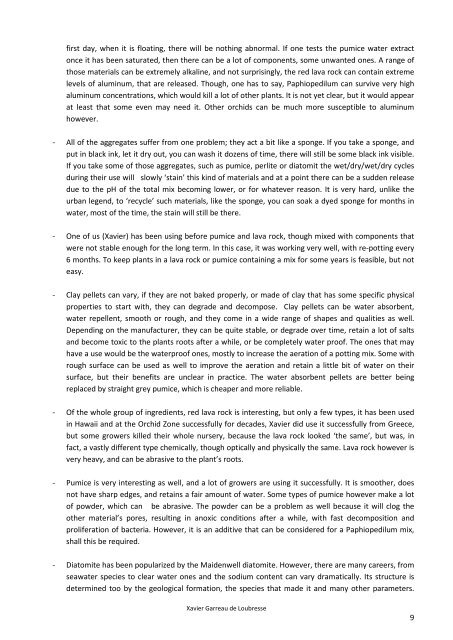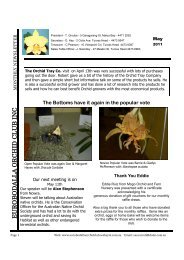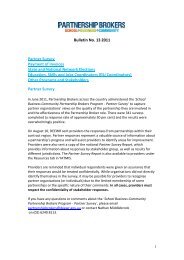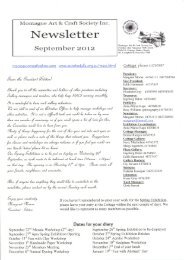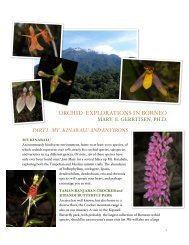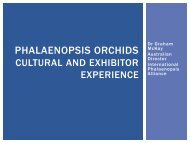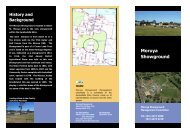Orchid Growing Substrates
Orchid Growing Substrates
Orchid Growing Substrates
Create successful ePaper yourself
Turn your PDF publications into a flip-book with our unique Google optimized e-Paper software.
first day, when it is floating, there will be nothing abnormal. If one tests the pumice water extract<br />
once it has been saturated, then there can be a lot of components, some unwanted ones. A range of<br />
those materials can be extremely alkaline, and not surprisingly, the red lava rock can contain extreme<br />
levels of aluminum, that are released. Though, one has to say, Paphiopedilum can survive very high<br />
aluminum concentrations, which would kill a lot of other plants. It is not yet clear, but it would appear<br />
at least that some even may need it. Other orchids can be much more susceptible to aluminum<br />
however.<br />
- All of the aggregates suffer from one problem; they act a bit like a sponge. If you take a sponge, and<br />
put in black ink, let it dry out, you can wash it dozens of time, there will still be some black ink visible.<br />
If you take some of those aggregates, such as pumice, perlite or diatomit the wet/dry/wet/dry cycles<br />
during their use will slowly ‘stain’ this kind of materials and at a point there can be a sudden release<br />
due to the pH of the total mix becoming lower, or for whatever reason. It is very hard, unlike the<br />
urban legend, to ‘recycle’ such materials, like the sponge, you can soak a dyed sponge for months in<br />
water, most of the time, the stain will still be there.<br />
- One of us (Xavier) has been using before pumice and lava rock, though mixed with components that<br />
were not stable enough for the long term. In this case, it was working very well, with re-potting every<br />
6 months. To keep plants in a lava rock or pumice containing a mix for some years is feasible, but not<br />
easy.<br />
- Clay pellets can vary, if they are not baked properly, or made of clay that has some specific physical<br />
properties to start with, they can degrade and decompose. Clay pellets can be water absorbent,<br />
water repellent, smooth or rough, and they come in a wide range of shapes and qualities as well.<br />
Depending on the manufacturer, they can be quite stable, or degrade over time, retain a lot of salts<br />
and become toxic to the plants roots after a while, or be completely water proof. The ones that may<br />
have a use would be the waterproof ones, mostly to increase the aeration of a potting mix. Some with<br />
rough surface can be used as well to improve the aeration and retain a little bit of water on their<br />
surface, but their benefits are unclear in practice. The water absorbent pellets are better being<br />
replaced by straight grey pumice, which is cheaper and more reliable.<br />
- Of the whole group of ingredients, red lava rock is interesting, but only a few types, it has been used<br />
in Hawaii and at the <strong>Orchid</strong> Zone successfully for decades, Xavier did use it successfully from Greece,<br />
but some growers killed their whole nursery, because the lava rock looked ‘the same’, but was, in<br />
fact, a vastly different type chemically, though optically and physically the same. Lava rock however is<br />
very heavy, and can be abrasive to the plant’s roots.<br />
- Pumice is very interesting as well, and a lot of growers are using it successfully. It is smoother, does<br />
not have sharp edges, and retains a fair amount of water. Some types of pumice however make a lot<br />
of powder, which can be abrasive. The powder can be a problem as well because it will clog the<br />
other material’s pores, resulting in anoxic conditions after a while, with fast decomposition and<br />
proliferation of bacteria. However, it is an additive that can be considered for a Paphiopedilum mix,<br />
shall this be required.<br />
- Diatomite has been popularized by the Maidenwell diatomite. However, there are many careers, from<br />
seawater species to clear water ones and the sodium content can vary dramatically. Its structure is<br />
determined too by the geological formation, the species that made it and many other parameters.<br />
Xavier Garreau de Loubresse<br />
9


